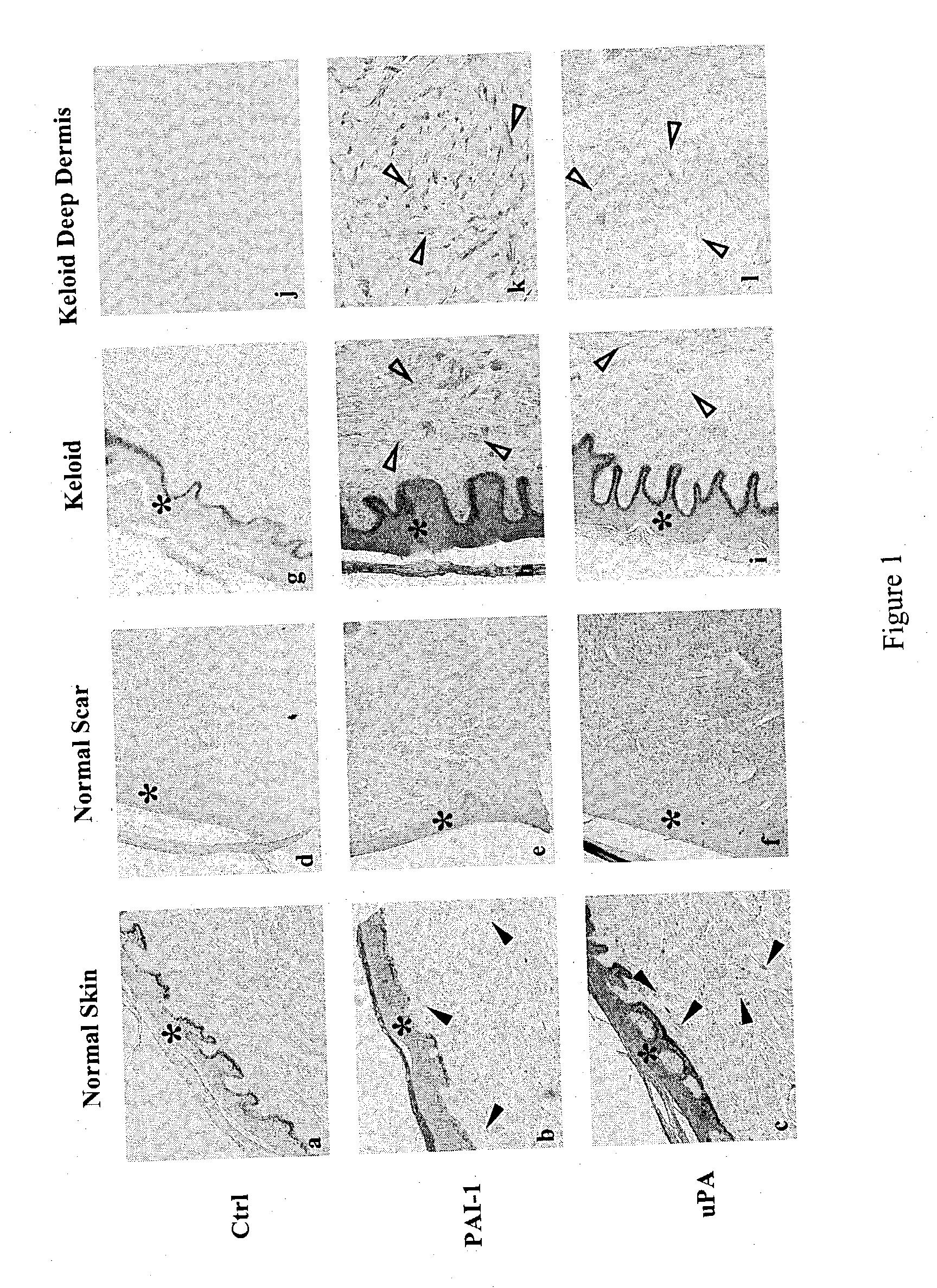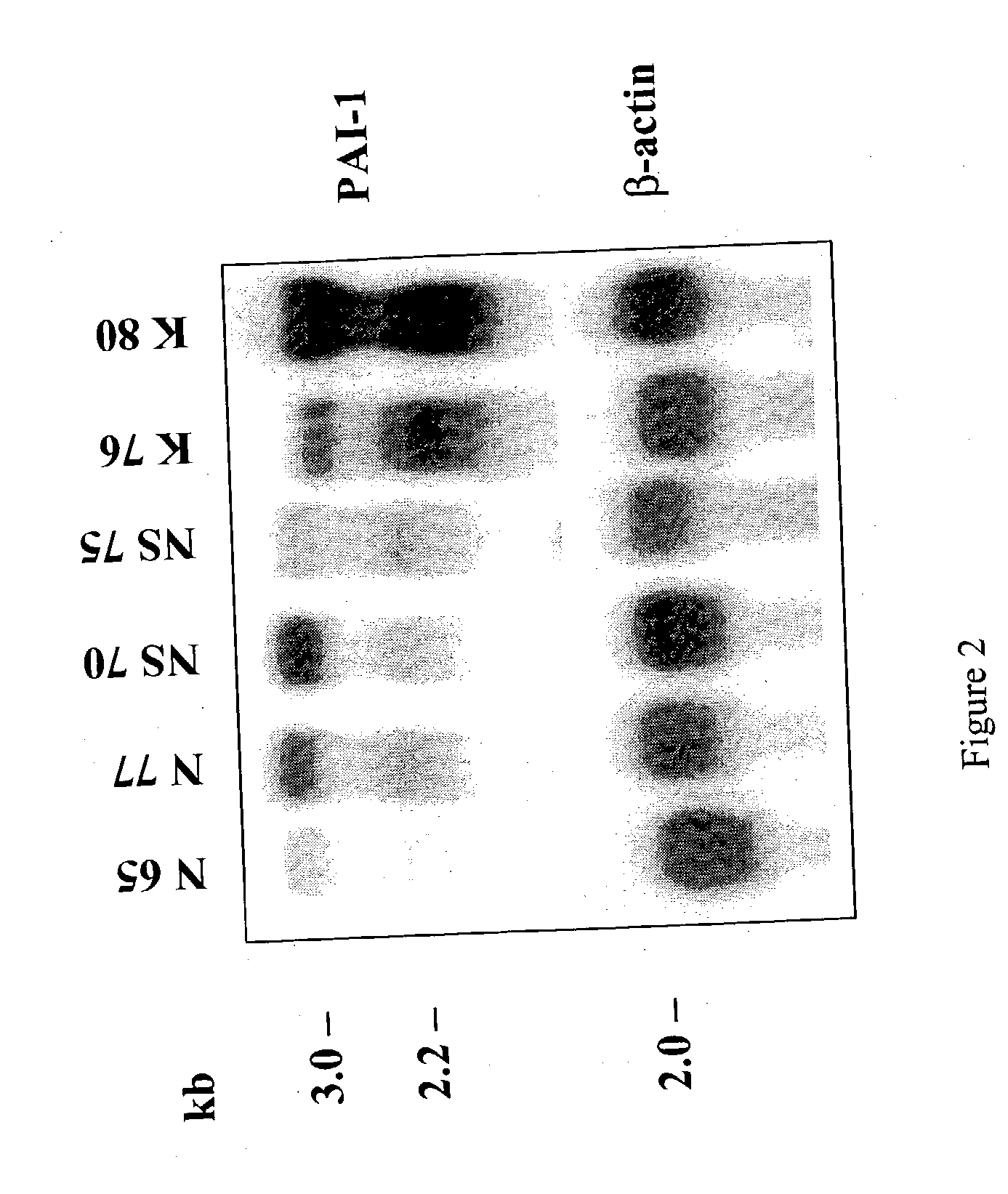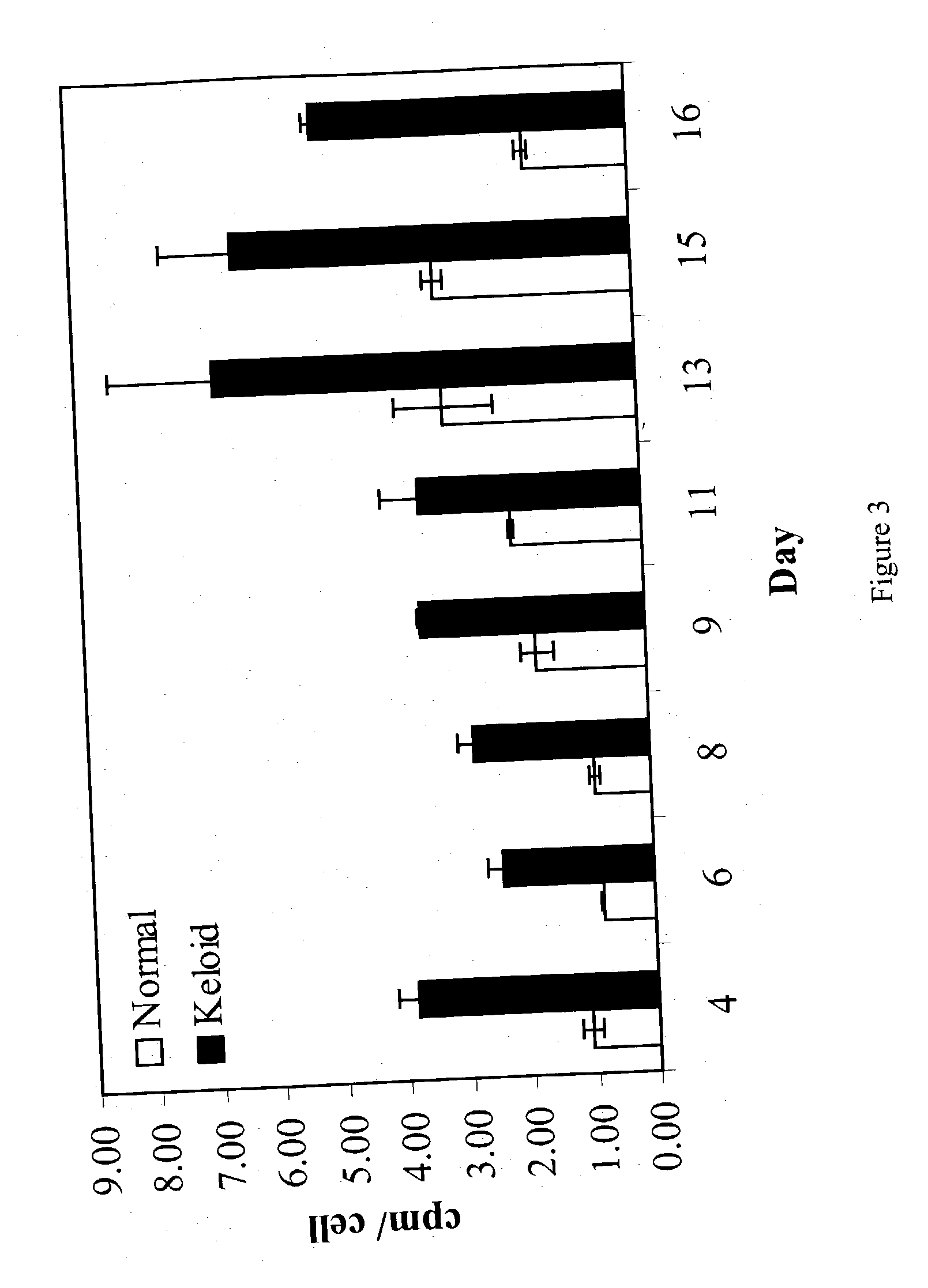Treatment and prevention of abnormal scar formation in keloids and other cutaneous or internal wounds or lesions
a scar formation and scar technology, applied in the direction of cardiovascular disorders, peptides, drug compositions, etc., can solve the problems of hypertrophic scars, keloids or hypertrophic scars, and delicate balance of wound healing process, so as to reduce the activity of plasminogen activator inhibitor-1 and reduce the accumulation
- Summary
- Abstract
- Description
- Claims
- Application Information
AI Technical Summary
Benefits of technology
Problems solved by technology
Method used
Image
Examples
Embodiment Construction
[0082] Materials and Methods
[0083] Cell Isolation: Fibroblasts were established from donors of human normal skin, scar, and keloid using the explant method. The protocol for skin and scar collections was approved by both Children's Hospital Los Angeles and Charles R. Drew University of Medicine and Science. The raised core region of keloid scars was used for fibroblast isolation. Fibroblasts were grown in Dulbecco's Modified Eagle's Medium (DMEM) (Life Technologies, Inc., Grand Island, N.Y.) containing 100 U / ml penicillin, 100 .mu.g / ml streptomycin, and 10% fetal bovine serum (Life Technologies, Inc.). Cultures were incubated in a humidified incubator in an atmosphere of 5% CO.sub.2 and 95% air. Fibroblasts were harvested from cultures using 0.25% trypsin containing 0.05% ethylenediamine tetraacetic acid in Hanks' solution (Life Technologies, Inc.) and passaged once a week. Early passages (2-10) of fibroblasts were used in the experiments. Cell passage is defined as weekly expansion...
PUM
 Login to View More
Login to View More Abstract
Description
Claims
Application Information
 Login to View More
Login to View More - R&D
- Intellectual Property
- Life Sciences
- Materials
- Tech Scout
- Unparalleled Data Quality
- Higher Quality Content
- 60% Fewer Hallucinations
Browse by: Latest US Patents, China's latest patents, Technical Efficacy Thesaurus, Application Domain, Technology Topic, Popular Technical Reports.
© 2025 PatSnap. All rights reserved.Legal|Privacy policy|Modern Slavery Act Transparency Statement|Sitemap|About US| Contact US: help@patsnap.com



